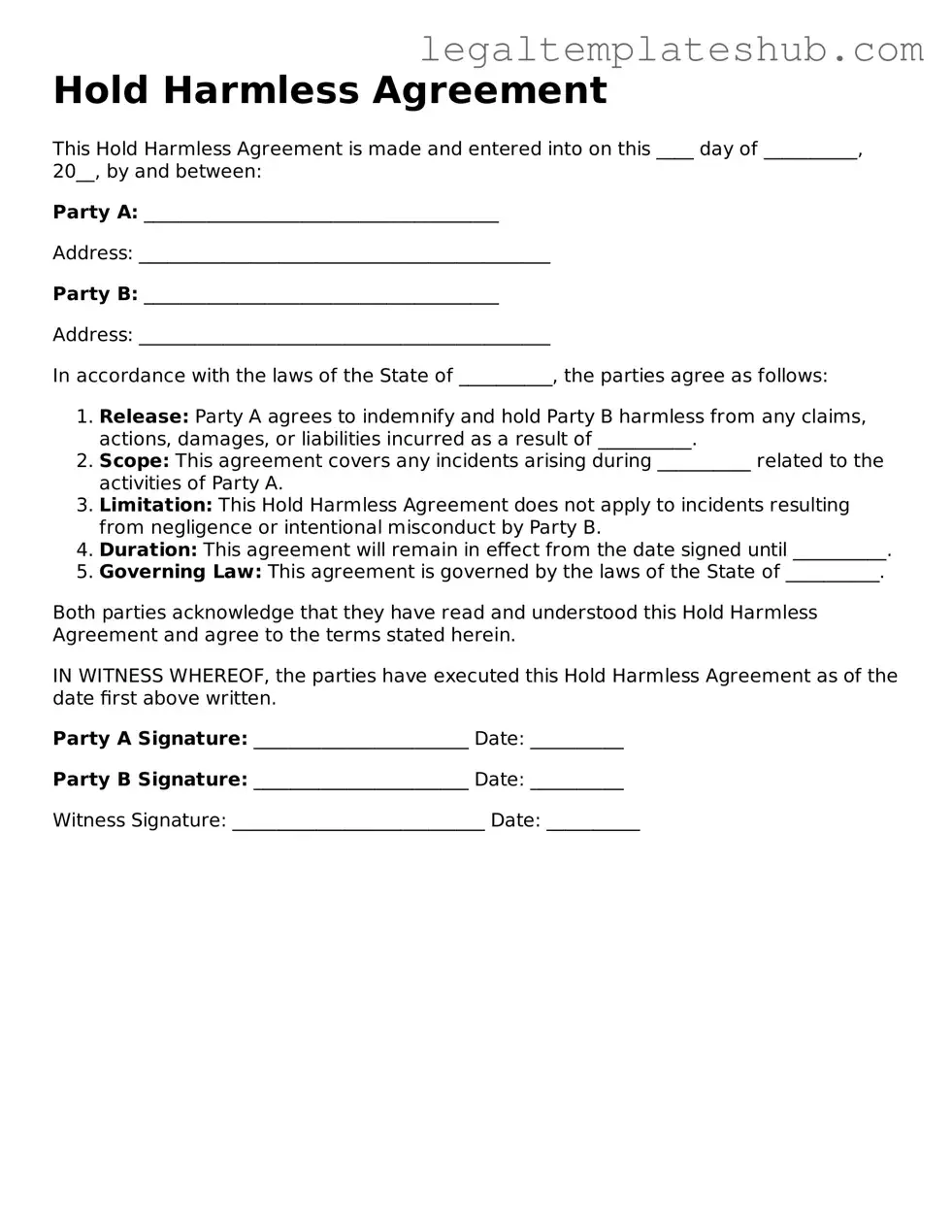Printable Hold Harmless Agreement Template
A Hold Harmless Agreement is a legal document designed to protect one party from liability for any injuries or damages that may occur during a specific activity or event. By signing this agreement, participants acknowledge the risks involved and agree not to hold the other party responsible. Understanding the implications of this form is crucial for anyone engaging in activities where liability could arise.
To ensure your protection, consider filling out the Hold Harmless Agreement form by clicking the button below.
Access Editor
